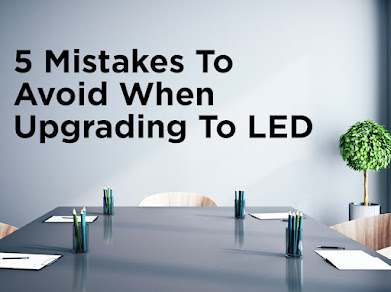Why should you upgrade LED Lighting with Green Power saver?
The light-emitting
diode, often known as an LED, is the lighting technology that has the highest
energy efficiency and is evolving the quickest at the present time. When
compared to other forms of lighting, excellent LED light bulbs have a longer
lifespan, are more robust, and provide light of equivalent or higher quality
than other types of lighting.
LED lighting is a
fantastic opportunity for those who are interested in lowering the amount of
energy they consume in their homes as well as their ecological imprint. Light
emitting diodes, more often referred to as LEDs, save energy, cut down on
waste, and are now far more affordable than they were only a few short years
ago.
When homeowners or
business owners wish to lower their monthly electricity costs, energy experts
often offer LED lighting as a cost-effective solution. Because LED goods have a
longer service life, consumers will need to replace their lamps less often,
which will result in further cost savings.
When used in
locations that are air conditioned, LED lighting results in even greater
reductions in power use than conventional lighting does. You are not only
decreasing the amount of electricity that is used by the lighting system
itself, but you are also decreasing the amount of heat that has to be removed
by equipment that provides cooling.
Why should one
upgrade to LED Lighting?
·
Reduction in Electricity
You are able to
significantly cut down on the amount of power that your business building
consumes by installing LED lighting, which is available in a broad range of
light fixtures to accommodate a diverse range of requirements and uses. The
transition to LED may be made in a variety of settings, such as streetlights,
the illumination in parking garages, and task lighting. There are endless
chances for this changeover.
·
Efficient Results
LEDs have risen in
popularity in large part due to the fact that they are far more
energy-efficient than incandescent bulbs. Greater energy efficiency results in
lower power costs, which means that you will save money. They save 75% of the
energy that would normally be used, and sometimes even more. Making the switch
to light-emitting diodes (LEDs) is one of the simplest and most cost-effective
solutions to enhance energy efficiency all through the year.
·
Cost Effective
When light-emitting
diodes (LEDs) were originally introduced to the consumer market, their initial
cost was rather high in comparison to that of traditional incandescent light
bulbs. However, it just accounts for the costs incurred initially. Even even
then, the much increased lifetime and improved energy efficiency of LEDs meant
that they had a lower total cost of ownership than other lighting options.
As a result of the
significant pace at which the cost of LED lights has been decreasing, it is now
abundantly evident that these lights are the clear victor in terms of what is
the most cost-effective option.
·
Safe to operate
The LED lights
themselves are less difficult to manipulate, and because of their low power
consumption, they may continue to function for a longer period of time even
while operating off of backup power. LED lights may also be promptly restarted
in the event that they get accidentally disconnected, in contrast to HID lamps,
which have a restrike time that must elapse before they can be used again. LED
lights are often utilised in outdoor and industrial settings. In the event that
the HID lights are turned off inadvertently, this results in the area being
left in the dark for a few minutes; however, this is not a problem with LED
illumination.
·
Durability
LEDs don't merely
produce light for longer. In general, the filaments and tubes utilised in the
building of incandescent and fluorescent light bulbs are not as long-lasting as
the creation of LED
light bulbs. They Generate High-Quality Light in Every Color.
Forget about the very
dazzling white LED lights that were the standard some years ago. These days,
light-emitting diodes, or LEDs, are available in a wide variety of colours, as
well as a white light that is somewhat analogous to that of an incandescent
bulb.
CONCLUSION
When you make the
move to lighting that is more energy-efficient, you may illuminate your house
with the same amount of light while spending less money overall. Using LED
lighting may help a family save a significant amount of money on its annual
energy bills. Lighting accounts for around 15 percent of a home's total power
use on average. If you are still making use of incandescent light bulbs, making
the move to lighting that is more energy-efficient is one of the quickest
methods to reduce your monthly energy expenses.
In addition to
selecting lighting that is energy efficient, you should also think about
employing controls such as timers and dimmers in order to conserve power.
Timers may be used to turn lights off automatically when they are not in use,
and dimmers can be used to reduce the amount of light that is produced. When
shopping for items, you should be sure to get ones that are suitable for usage
with the LED lights
you want to use.


Comments
Post a Comment